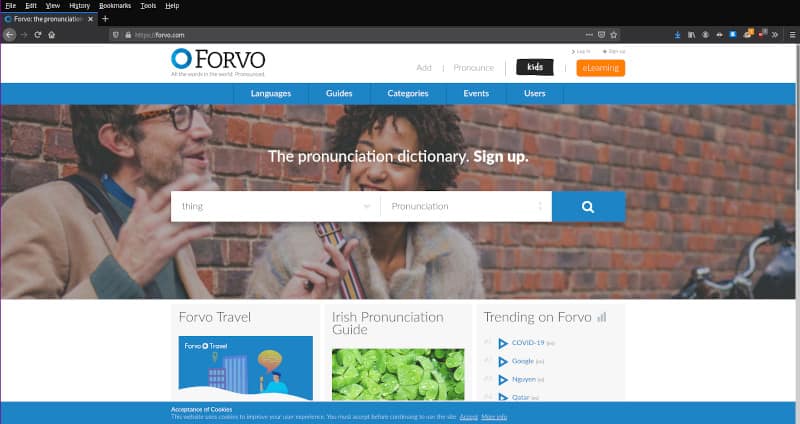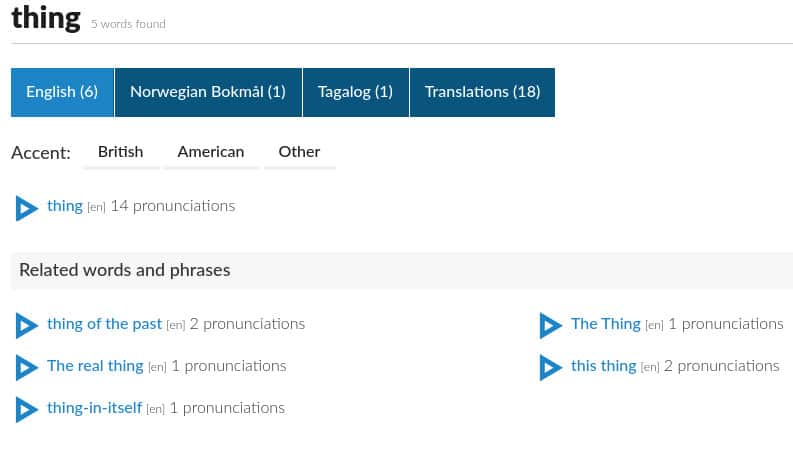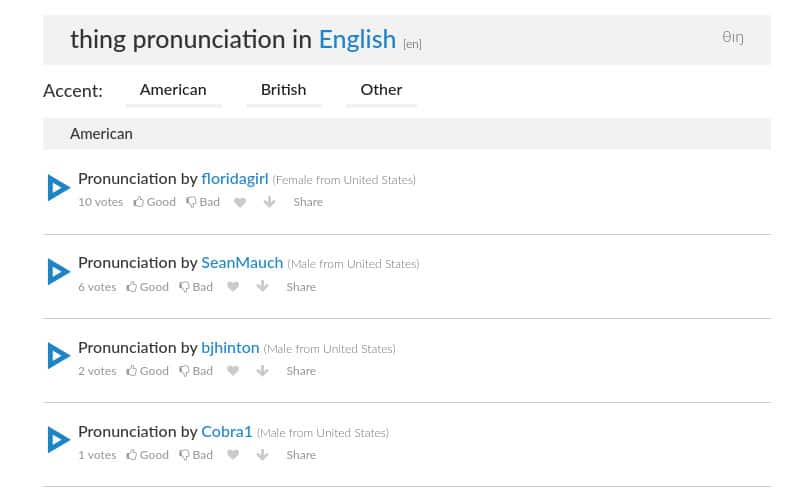Wouldn’t it be great if you could speak English and sound like a native speaker? You could approach any situation with confidence that you would be understood by everyone and avoid embarrassing situations caused by having a heavy accent.
One of the biggest factors preventing many of us from feeling comfortable speaking in a foreign language is an accent. We may feel that we sound strange or odd when speaking in our target language. Don’t let this feeling prevent you from practicing your speaking skills. Even if you do have an accent, the only way to get rid of it is to practice speaking.
But is there a way to target our accents and reduce them? Of course, let me introduce you to the International Phonetic Alphabet (IPA).
The IPA is the greatest tool you can use to improve your English pronunciation. The IP Association has created an alphabet for all the sounds possible in language. This means you can use it to learn a direct route straight to proper pronunciation; You can use the IPA to say any English word!
What is the IPA?
Like I said above, the IPA is an alphabet for sounds. Anyone who has studied English knows that English spelling is strange. It seems to be a completely random system with no rules or reason behind it. This is where the IPA shines. If you know the IPA, you can use it to read transcriptions of the way an English word sounds.
Each symbol of the IPA has only one sound. That is quite different from English, where a single letter or group of letters can have many different sounds. Can you see how this is useful? Using the IPA, you can see exactly how to pronounce any word in English! Let’s take a look:
- bough /baʊ/
- rough /ɹʌf/
Those words look similar, but they do not sound similar. Look next to the words; that is an example of IPA. If you were able to read IPA, you would immediately be able to tell not only that the words are said differently; you would be able to pronounce them too!
What about an example of words which sound similar?
- bough /baʊ/
- rout /ɹaʊt/
We see the same word from above, bough, paired with a new word. These words look different but they sound similar. This is the exact opposite of the situation above, isn’t English spelling strange? If you didn’t already know that these words sound similar, you would be able to tell through the IPA listed next to the words. They both share the vowel sound /aʊ/.
The great thing about these symbols is wherever you see /aʊ/ the sound is pronounced the same. Want to know even more about the IPA? The International Phonetic Association has published a comprehensive handbook with detailed charts and IPA profiles for 29 languages (Check it out on Amazon).
How is it used?
One of the most important things to realize about pronunciation is that it is very simple to pronounce things properly, although it might not always be easy! Here’s what I mean by that. Have you ever played an instrument before? You have to put your lips and tongue into the proper positions if you want to play the flute or the saxophone. It is the same idea behind proper pronunciation. If you can put your tongue and lips into the proper position, you will always make the same sound. Let’s look at what I mean:

The chart above is an example of an English vowel chart. This chart shows the vowel sounds of English. It is labeled with the IPA symbols in the middle. Front, central, and back across the top. Close, close-mid, open-mid, and open down the left side.
Both the shape of the chart and the labels indicate how you are supposed to position your mouth when you pronounce these vowel sounds. For example, front means that your tongue will be forward in your mouth while back means your tongue will be positioned in the back of your mouth. It is similar for the labels on the left-hand side. Close means your mouth will be almost shut while you make this sound while open means the opposite.
Similarly, the height of the symbols on the chart is also important. Of course, if your mouth is almost closed your tongue will be higher in your mouth than if your mouth is completely open. So you can say that the sound /i/ is higher than the sound /a/.
What this means is if you position your tongue forward and high in your mouth and make a sound, you will make the sound /i/. If all you do from there is slowly open your mouth while changing nothing else, you will first make the sound /i/, then /e/, /ɛ/, /æ/, and finally /a/ when your mouth is completely open. Listen to this in action:
The first part of the video shows me pronouncing each vowel sound in isolation. The second part shows me pronouncing each vowel sound using a single breath. The only thing that is changing while I am doing this is my mouth is opening wider. The position of my tongue stays the same at the front of my mouth and my lower jaw pulls it down as it opens.
This is a powerful realization for pronunciation. It can’t get any simpler! All you need to do is put your tongue, lips, and mouth in the proper position. After you do this, you will make the proper sound!
How can it help me?
The IPA makes this simple to practice because it isolates each sound in the English language into one symbol. This means you can practice while focusing on only one sound. You do this by finding minimal pairs.
Minimal Pairs
A minimal pair is a set of words that are pronounced the same, except for one sound.
- bat /bæt/
- hat /hæt/
- cat /kæt/
- fat /fæt/
All of these words have the sounds /æt/ in them. They are only different in the first sound. To use minimal pairs to practice your pronunciation, first, you have to identify which sounds in English give you trouble. After you do that, you next have to find a set of words that isolate each of those sounds. For example:
Some speakers of English have a hard time pronouncing the sound /θ/ (in the word “thing”). So, let’s look at how to isolate this sound. We have to identify two words that sound the same but differ in one sound (one word must have /θ/ and the other word must have a different first sound). Can you think of anything?
- thing /θɪŋ/
- sing /sɪŋ/
Here’s a set of words that satisfy that criteria. Now, you need to know how to properly pronounce them. A useful website you can use to check the proper pronunciation of words is called Forvo. A community of volunteers at Forvo have kindly pronounced many different English (and many other language’s) words that you can access for free.

Here is a screenshot of the main page of Forvo.com. If we type the word “thing” into the search box, we can find pronunciation files uploaded from people all over the world.

These are the search results. Forvo also gives us related words and phrases that we can listen to if we’re interested. For now, let’s just click on the word “thing”.

Now we have a list of many different people saying the word “thing”. You can see the person’s gender as well as their home country. You may be able to find many different accents pronouncing the same word on Forvo. It can be good practice for getting used to hearing different English accents. Did you notice the IPA transcription in the upper right corner?
You can listen to the pronunciation of words right on the site. If you sign up for an account with Forvo (it’s free!), you can download an audio file of the pronunciation.
Once you have your set of words and you know how to pronounce them, you need to start practicing. You can do this by recording yourself and comparing your pronunciation to a native speaker’s (use Forvo or ask a friend). This is also one of the few times where I think flash cards are useful for language learning. You can use a language program like Anki to create flash cards that drill you on pronunciation.
Studying single IPA symbols
It’s also possible for you to study the symbols directly. You can do this using an interactive IPA chart. This is another situation where flash cards are useful. You can quickly and effectively learn the IPA symbols through flash card study since you are learning an alphabet. There is only a sound + symbol relationship to memorize. It isn’t like trying to learn new English vocabulary. There is no context to be found in IPA symbols; you only need to memorize what they look like and the sound that goes with each of them.
If you look at the interactive IPA chart, you will find a long list of IPA symbols. You do not need to learn them all! All you need to know are the symbols for English.
Learn your language’s symbols first
A smart idea would be to learn the IPA symbols for your native language first. You already are an expert in making these sounds. So it should be easy for you to pick up the IPA symbols in your native language. This will make understanding how the IPA works easier for you. You can find your language’s list of IPA symbols by searching the web. The Handbook of the IPA is a good resource to have because it compiles all of this information into a single volume for 29 of the world’s languages.
What else can I do?
Shadowing
Another technique you can use to improve your English pronunciation is called shadowing. This is when you repeat after the audio while listening to some material produced in English such as a podcast, a song, a movie, etc. You can do this while watching YouTube videos too. YouTube may be one of the most useful for shadowing because you can use subtitles and adjust the audio speed while listening to them.
You can use shadowing in conjunction with IPA study by paying attention to the types of words and sounds you have difficulty pronouncing in English. Once you identify where you have trouble, start compiling those minimal pair sets!
Reading aloud
You can also read out loud to practice your pronunciation. I often do this when I’m studying Japanese and Latin. This is most effective when you record yourself reading and then listen to it afterward so you can critique your performance.
Get advice from a native speaker
If you are having trouble pinpointing your weak spots in pronunciation, you can seek assistance from a native speaker. It can be hard to critique yourself if your listening skills aren’t the best. If you find yourself in this situation, you know you need to work on your listening abilities. It’s simply not possible to catch your own mistakes pronouncing a sound if you can’t hear the proper way to pronounce it to begin with.
If you find that you are struggling with your accent, it is beneficial to seek coaching from a native speaker who can immediately spot your mistakes and work with you to correct them. Native speakers have thousands of hours worth of practice with English. That means that they not only have the abilities to help you identify your pronunciation weak points, but they have the vocabulary to quickly help you pick out sets of minimal pairs to use for pronunciation practice.
Receive personalized accent coaching here!
Conclusion
Learning to properly pronounce English can be a tough journey. Training yourself to properly articulate the sounds of English is like training at a gym. It isn’t always fun to exercise, but the results are always something we can be proud of. If you have started on your way to speaking English clearly, keep going. You will be glad once you reach your goal. There is no better feeling than being able to speak in your target language worry free.
Happy studying!



